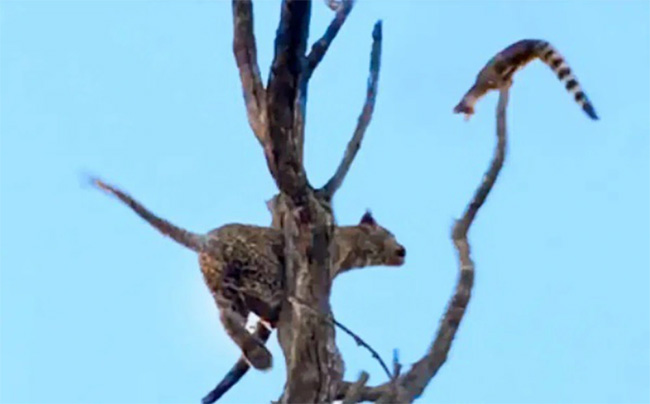The Leopard’s Hunt in Mashatu Reserve, Botswana, Captured by 32-Year-Old Guide Rodger Bowren.
Rodger Bowren stated: “That day, I was tracking a female leopard when I stumbled upon her two cubs playing together. But shortly after, their attention shifted to a nearby tree. One of the cubs began to move towards the base of the tree. That’s when I realized what had caught their interest.”

It was a genet, and the leopard had spotted its prey and quickly sought to approach. The genet was perched atop the tree. Without hesitation, the leopard sprang into action and climbed the tree.
“I think it’s very rare to see a genet during the day,” Rodger Bowren remarked. The leopard climbed swiftly, attempting to catch the genet, but on this unfortunate day, not only did it fail to catch the genet, but it also found itself stuck high up in the tree.
When the leopard was just a short distance from the genet, the latter executed a spectacular leap from one tree to another and made its escape.
Rodger Bowren shared: “I didn’t think the leopard could climb a tree nearly 10 meters high to catch the genet. After the jump, the genet was injured; it hit the ground and quickly ran off to find shelter, miraculously surviving the injury. This is a scene from nature that I will remember for a long time.”
The genet is a small, agile animal of medium size that resembles a cat. They measure approximately 40 – 100 cm in length, excluding the tail, and weigh around 1-5 kg. Their tails range from 12 – 90 cm long, and their lifespan in the wild is about 5-15 years.
Genets are solitary predators and are primarily nocturnal, rarely appearing during the day. Both leopards and genets are climbing masters, hiding in advantageous positions above to observe other competitors.
However, in this case, the leopard was overly confident in its abilities, which led it into a precarious situation.


















































